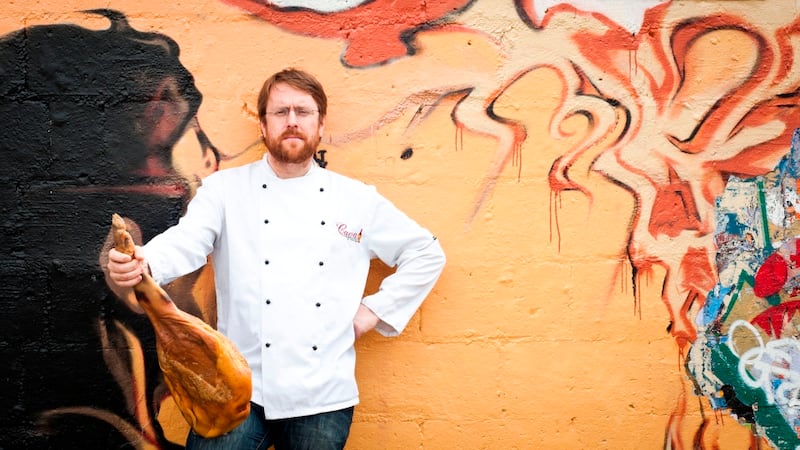Raw oysters are not to everyone’s fancy, but I find it hard to stomach reasons why we should cook them. Lightly smoked, I can do. Over hay or apple wood chips, preferably. And then served with something cold, such as apple sorbet. Finished with a little wood sorrel on top, for a gentle touch of acidity.
My favourite way to eat oysters is straight out of the half shell: raw as hell. I think it is the saline quality of the sea that they embody, their beautiful juices evoking for me memories of the fresh seaside air that I experienced as a child.
One should never chew an oyster. They should always be swallowed whole. Pre-historic people fed well on these bivalves. Huge middens all over northern Europe testify to the essential importance of oysters in the diets of these Neolithic peoples.

It is only since the 19th century that we have cultivated oysters intensively. Up until that point, they were a common food for the working class. The advent of over fishing and pollution turned them into the food stuff of the well-to-do.
Like eggs, oysters contain lectin (a protein which binds things together). You can use oysters instead of egg yolks when making mayonnaise. Place two raw oysters (with a little of their juices) in a plastic jug. Season with a little sea salt and lemon juice and blend with a hand blender until smooth. Gradually begin to add a steady trickle of light rapeseed oil. Take your time adding the oil.
When all the oil has been incorporated (about 200ml), taste the mayonnaise. The balance between salt and acidity is vital. You may need a little more of either.
In Aniar, we use oyster mayonnaise regularly: to give body to a light clam and periwinkle dish, or piped directly onto some dried cabbage for a little amuse bouche.
They’re also great dredged in potato flour and deep-fried. But only lightly, so you can still appreciate the rawness.











